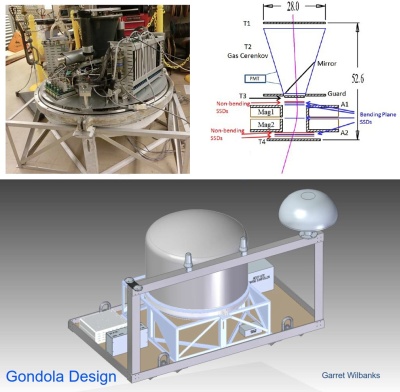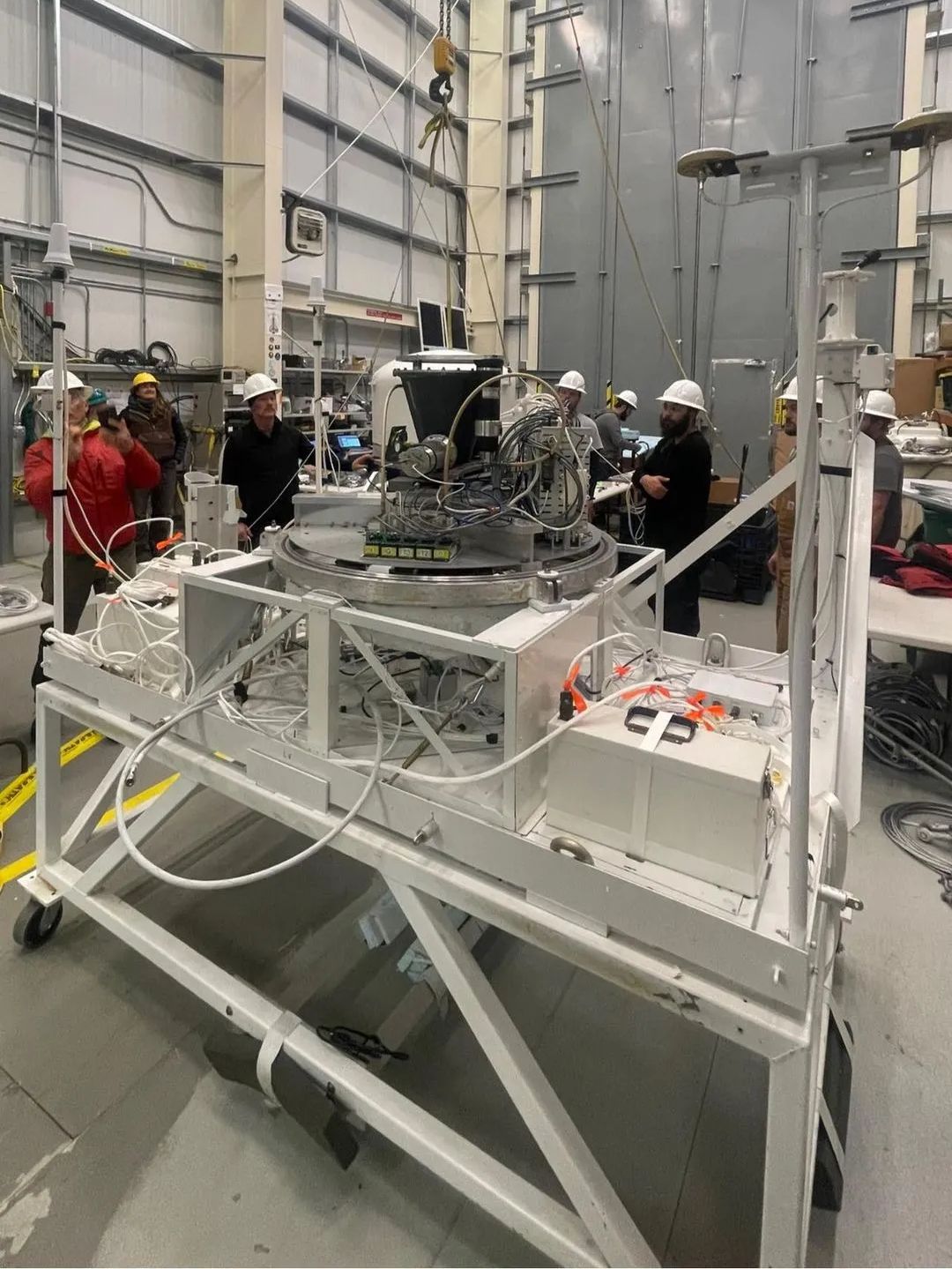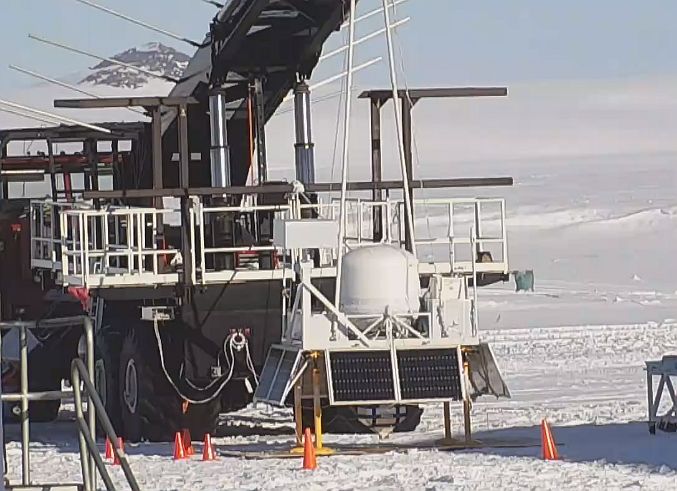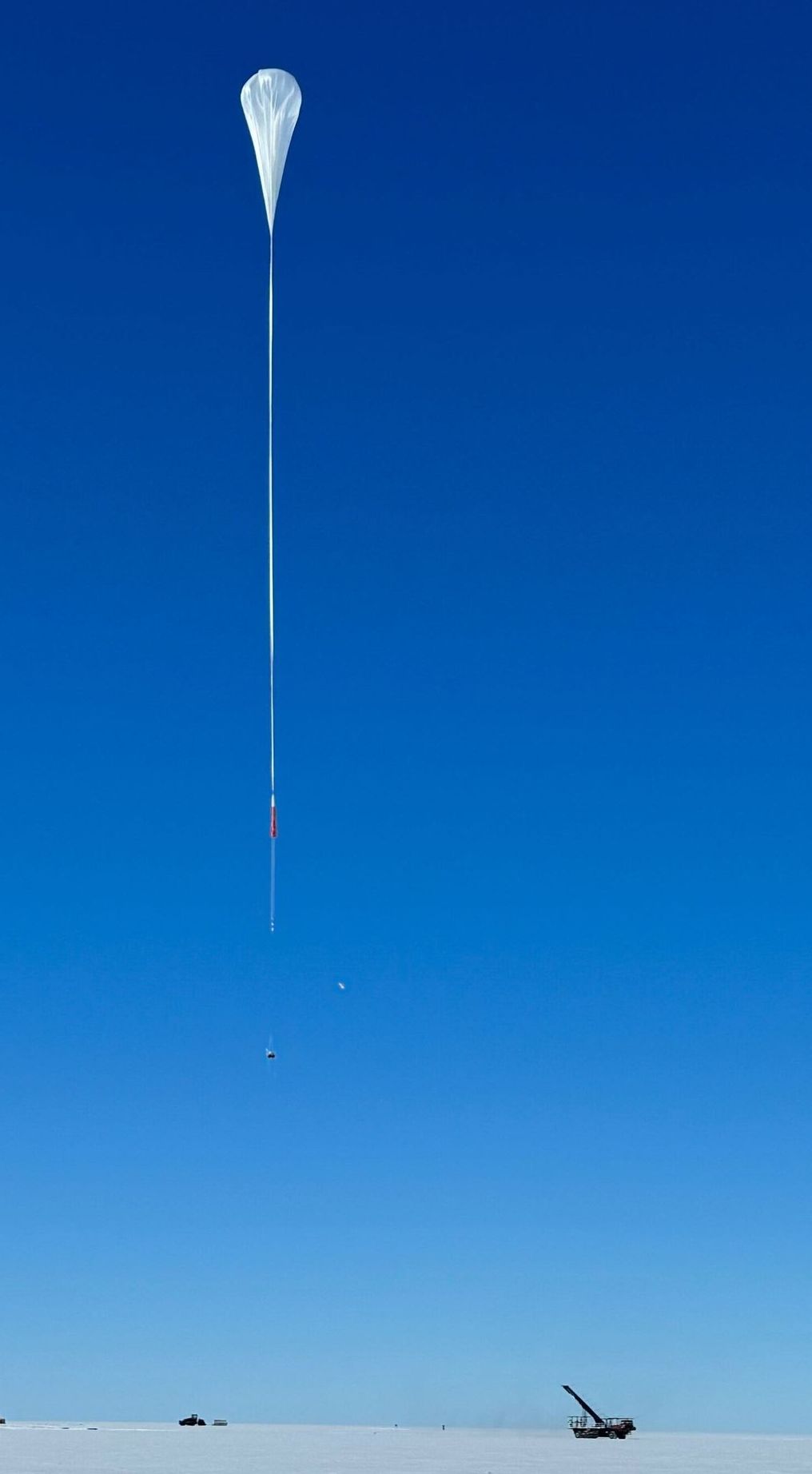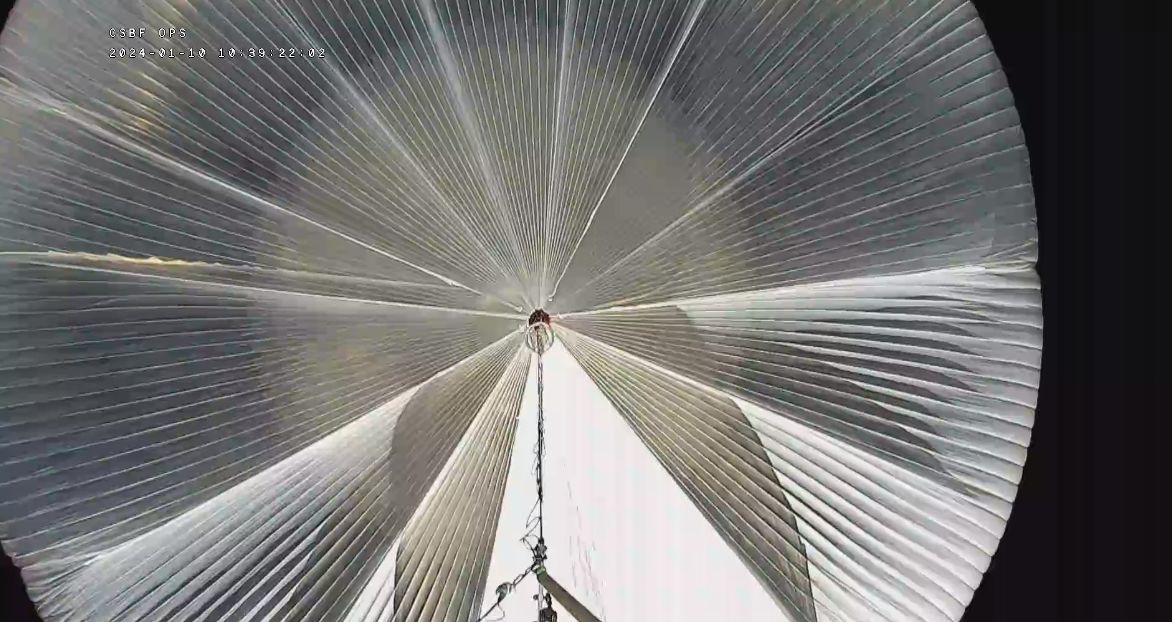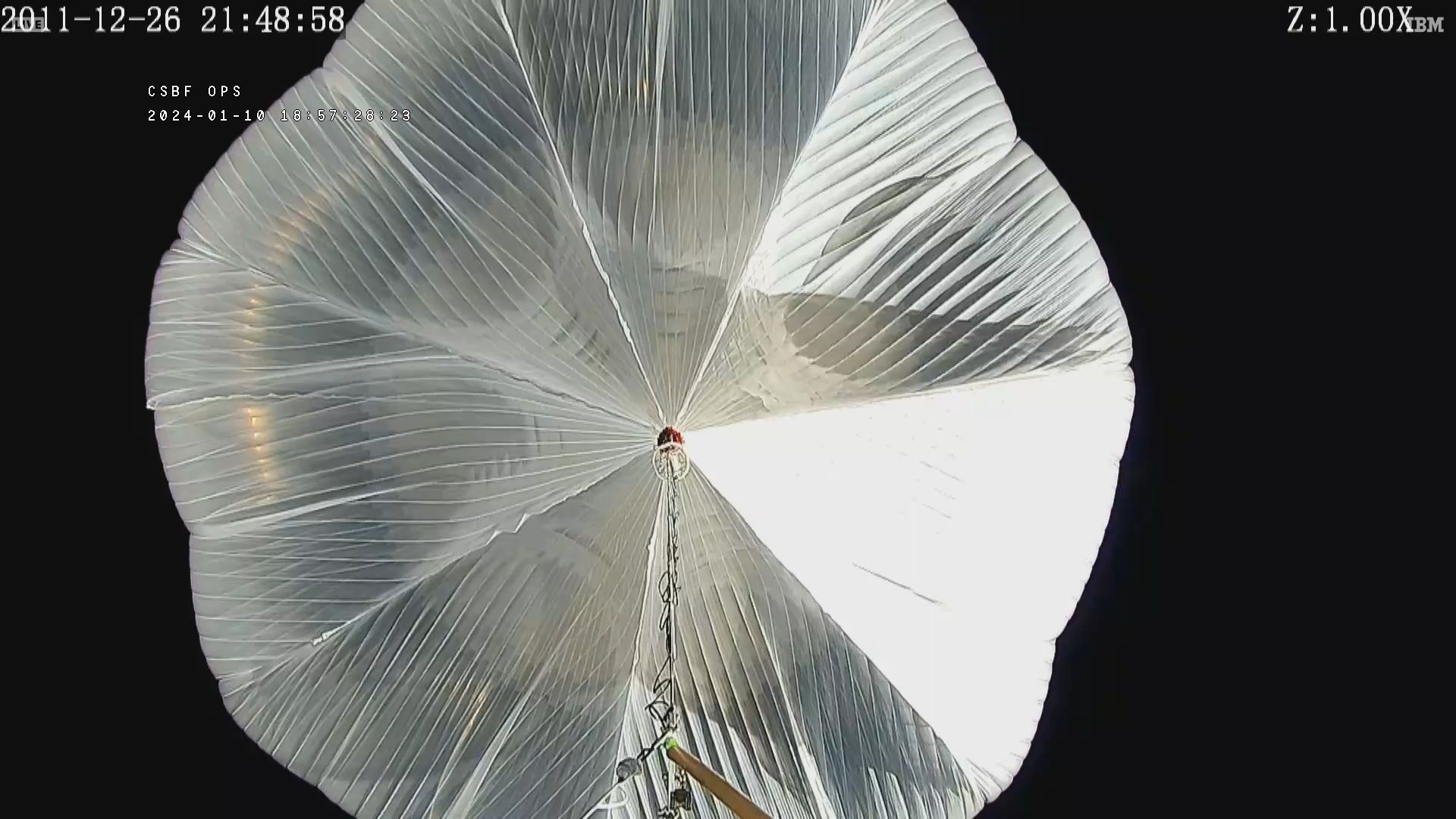Purpose of the flight and payload description
AESOP-Lite is the evolution of two instruments: LEE (Low Energy Electrons) and AESOP (Anti-Electron Sub Orbital Payload) both devoted to the study of cosmic ray electrons. LEE was originally developed by the University of Chicago in 1968 and operated by the Bartol Research Institute since 1984 while AESOP was built to complement LEE's observations by also determining the charge sign of the electron. Both instruments were flown together on balloon missions since 1997. The AESOP-Lite instrument is a simple magnet spectrometer which inherited some of its components from the LEE telescope. At left we can see an scheme of it and its gondola. It's primary objective is to search for the origin of low-energy in the electron spectrum between 10-300 MeV answering two fundamental questions: what causes the negative slope of the spectrum below 100 MeV and what is the source of these low energy electrons. A secondary objective is to measure the time variation of electrons and positrons magnetically trapped in the geomagnetic field.
AESOP-Lite counts with 3 scintillators (T1, T3, and T4) which are used as the online trigger signal, one scintillator (guard) used offline as a anticoincidence signal and a Cherenkhov threshold detector (T2) filled with C3F8 gas for hadron and backward particles identification. To obtain a full 3D view of the particle trajectory, AESOP-Lite counts with a magnet spectrometer and silicon strip detector trackers. The magnet spectrometer is based on dual ""ring dipole"" permanent magnets using the Halbach design, allowing the placement of a tracker plane at the center of the magnetic field to optimize resolution without requiring complex wiring to the detector. The tracking system is composed of seven planes of silicon strip detector trackers, 4 in the bending plane, 3 in the non-bending plane. Each strip is connected to 12 front-end chips, with 64 channels each, adding up to 768 channels per board. The system was developed at University of California, Santa Cruz (UCSC) originally for the Fermi/LAT satellite instrument. However, it has been reused for multiple experiment such as the Proton Computer Tomography scanner (pCT), and now AESOP-Lite.
AESOP-Lite is housed inside a pressure vessel insulated with polyurethane and mounted in a frame gondola that also serve of support for the NASA telemetry/Telecommand system (SIP), iridium antennas, electronics, solar panels and ballast hopper.
As an additional payload, another experiment was installed on the AESOP-Lite gondola called Anihala (Antarctic Infrasound Hand Launch). It is a cooperative mission between the Swedish Institute of Space Physics and Sandia National Lab, aimed to measure natural background sound in the stratosphere over a continent where human-generated sound is largely absent. The experiment consists of an infrasound sensor pod already flew over the Arctic in the summer of 2020. Scientists want to get the chance to characterize and investigate the infrasound environment over Antarctica and assess what kind of natural low-frequency sound dominates the soundscape where there are no industrial sources. Depending on which natural phenomena occur during the flight, they expect to detect infrasound from aurora borealis and meteors as well as ocean waves and calving glaciers.
On the balloon technology side, the mission served to test for the first time in a long-duration flight a new balloon being developed by Aerostar for the NASA balloon program. Knicknamed the "BIG60" the balloon is the largest ever manufactured and flown succesfully in the world with a volume of 60 million cubic feet at full inflation. The balloon can reach altitudes above 150.000 ft with a suspended weight of 1.500 lbs.
Details of the balloon flight
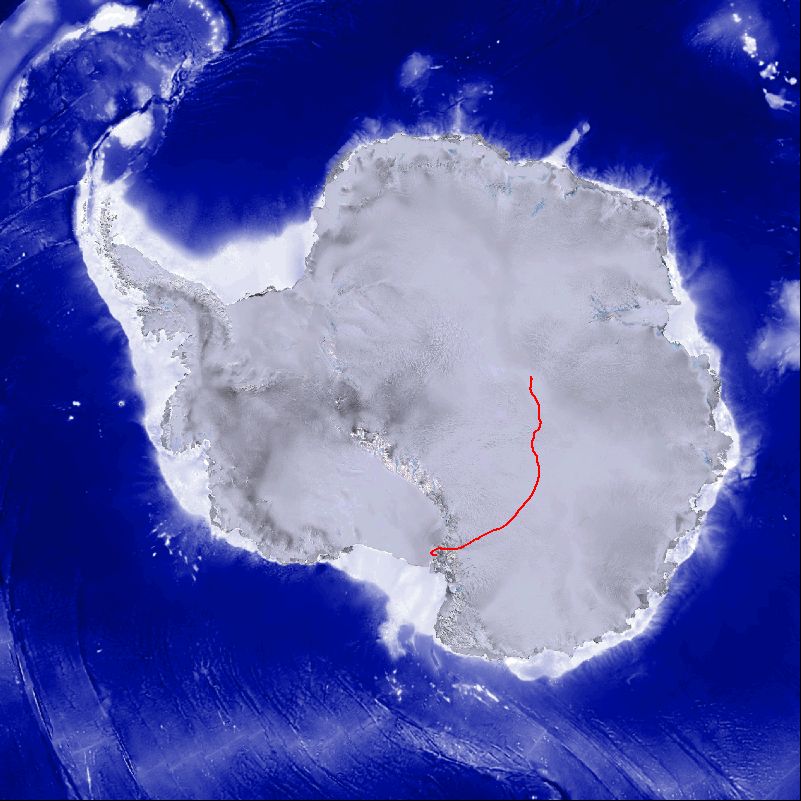
Balloon launched on: 1/10/2024 at 2:33 utc
Launch site: Williams Field, McMurdo Station, Antarctica
Balloon launched by: Columbia Scientific Balloon Facility (CSBF)
Balloon manufacturer/size/composition: Zero Pressure Balloon Aerostar - 60.000.000 cubic feet
Flight identification number: 737NT
End of flight (L for landing time, W for last contact, otherwise termination time): 1/12/2024 at 7:30 utc
Balloon flight duration (F: time at float only, otherwise total flight time in d:days / h:hours or m:minutes - ): 46 h
Landing site: In the Antarctic Plateau, 77 km NE of Dome Argus
Mission 737NT carrying onboard the AESOP-Lite experiment was launched from Williams Field, near McMurdo Station at 2:33 utc on January 10, 2024. After a nominal slow ascent that took 7 hours the 60.000.000 cubic feet balloon reached an altitude of 156.000 feet. However during the following hours the balloon started to loose altitude steadily a clear indication of a possible leak and a situation well beyond any probable recovery, even dumping all ballast available.
Finally after reaching an altitude of 113.000 feet, at about 7:30 utc on January 12, 2024 the mission was terminated with ehe payload landing in the Antarctic Plateau, 77 km NE of the natural formation called Dome Argus. The total flight time was 46 hours.
External references
- AESOP-Lite website University of Delaware
- NASA Scientific Balloons Ready for Flights Over Antarctica NASA website
16368If you consider this website interesting or useful, you can help me to keep it up and running with a small donation to cover the operational costs. Just the equivalent of the price of a cup of coffee helps a lot.

